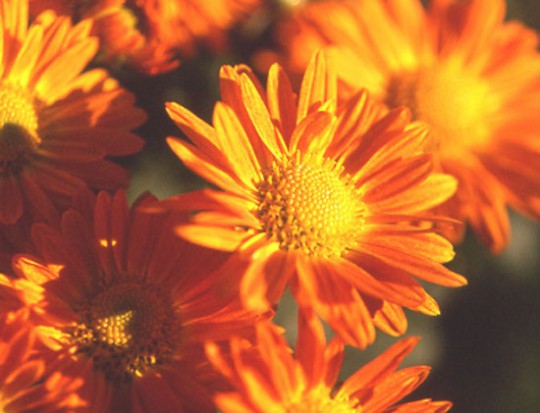Fall Gardening Tips
September 23, 2012
As fall approaches, now is the time to start preparing your landscape for the upcoming cooler weather, according to the Santa Rosa extension service.
Flowers
- Cut back, and remove old flower stalks from flowering annuals and re-fertilize in order to obtain one more color before cool weather.
- Prepare beds for the planting of cool season annuals next month. Some plants to establish for fall, winter and early spring include: pansy, petunia, snapdragon, larkspur, stocks, statice, bachelor button, calendula, cleome, alyssum, marigolds, verbena, dianthus and candytuft.
- Divide perennials such as Shasta daisy, canna, amaryllis, daylily, coneflower, violets, and ornamental grasses like mondo grass and liriope.
- Cut strong stems of roses to encourage new growth for final flush of the year.
- Find a local source, or order wildflower seeds for fall planting. Be certain to choose a mixture that is specifically for the south. Prepare the area, but wait until November to seed them.
Trees and Shrubs
- Last month to fertilize woody ornamental shrubs in the landscape.
- No pruning unless it’s absolutely necessary. This is probably the worst time of year to do major pruning of shrubs. Late summer/fall pruning can stimulate tender growth that might be damaged by low winter temperatures.
- Plant woody ornamentals, including trees, shrubs, vines and ground covers during the fall and early winter. They respond well to planting late in the year because our relatively mild winters allow for root growth. Fall planted shrubs, for example, are well on their way toward having their roots established before hot weather arrives next spring.
- Select crape myrtles while in bloom.
- Examine the small twigs on the outer canopy of hardwood trees for black twig borer damage. Remove and destroy infested twigs.
- Pine needles fall during September and October. Rake and use them in the vegetable and flower garden as well as in shrub beds. Pine needles make excellent mulch. Apply generously to obtain a depth of 2 to 3 inches on the soil surface after they have settled.
- Mature palms should receive an application of granular fertilizer. Use a special palm fertilizer that has an 8-2-12 +4Mg (magnesium) with micronutrients formulation. Apply one pound of fertilizer per 100 sqft of canopy area or landscape area.
Vegetable Garden
- Prepare the soil now, allowing about 3 weeks between the incorporation of amendments and planting. In September sow seeds of beets, broccoli, brussels sprouts, cabbage, carrots, cauliflower, collards, endive, escarole, kale, kohlrabi, leek, lettuce, mustard, onions, parsley, radishes and turnips.
- Last planting of beans (bush, lima and pole), cucumbers and summer squash
- Clean out the spring/summer vegetable garden once plants have stopped producing. Remove any that are known to have been diseased or heavily insect infested during the previous season.
Lawns
- Check the lawn weekly and watch for lawn pests. Check for chinch bugs and sod webworms in St. Augustine, spittlebugs and sod webworms in centipedegrass and mole cricket damage in all grasses
- Last month to fertilize bahiagrass, bermudagrass, St. Augustinegrass and Zoysiagrass using a complete fertilizer applied at 1.0 lb nitrogen per 1000 square feet containing 50% soluble and 50% slow-release nitrogen.




Comments